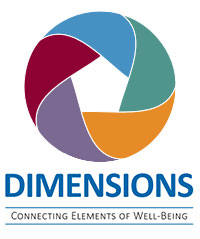
Midlife: Steps You Can Take to Help Avoid a Crisis
In midlife there are some important decisions to be made about your financial future. Financial planning, estate planning and active management of benefit options can make a big difference in how easily you, and your beneficiaries, can navigate your next season of life.
People in midlife are often referred to as the “sandwich generation” as many are between two sets of obligations—caring for children still at home and caring for aging parents. Good planning on your part can benefit your children, your parents and you. Here is a list of easy ways to get started:
Will and estate planning—A will or an estate plan provides a formal and legal roadmap for your loved ones for your funeral planning, guardianship of your children and asset distribution. HealthFlex members receive a free 30-minute meeting with an attorney through the Optum Employee Assistance Program (EAP) to discuss the options that make sense for you. Participants also receive 25% off subsequent meetings with the attorney. Call the EAP at 1-866-881-6800 for help finding an attorney.
Eldercare—If you have elderly parents who may soon need care, you can find companies in your area that provide everything from light cleaning to residential facilities by accessing your EAP website through either Benefits Access (in Well-Being Details) or Virgin Pulse (in the Benefits section). After you sign in, in the dropdown menu under “Find a Resource,” select “Eldercare.” You can also call the EAP at 1-866-881-6800 for assistance with your search.
Life insurance—If you have children or others you care for, life insurance can protect their financial futures and give you peace of mind. The amount of life insurance that you need depends on your current situation. If you are a Wespath participant, check with your plan sponsor for coverage amounts, and what might be available to you as supplemental insurance. Your family may be eligible for additional survivor benefits. Watch this video to see how death benefits helped care for one pastor’s family after his sudden death.
Health savings account (HSA)—According to the Employee Benefit Research Institute, the average American couple will need $270,000 in savings for a 90 percent chance to cover out-of-pocket costs in retirement. If you are enrolled in a HealthFlex HSA plan, unused money carries over each year, and can accumulate for use in retirement if you contribute more than you’ll need in a given year. A medical nest egg for health care costs when you are older may prevent you from using retirement savings on your health care expenses. Read more about the benefits of an HSA plan here.
Long-term care insurance—These policies can help defray the cost of services that assist people with routine-daily activities like bathing, dressing, eating, and getting in and out of bed. These services can be provided in your home, an adult daycare center, or in a nursing or assisted living facility. What services are covered is dependent upon the insurance purchased.
Regardless of setting, the costs of long-term care can be eye-opening: The national average monthly cost of a home health aide was $4,576 and a private room in a nursing home facility was nearly double that ($8,821) in 2020, according to Genworth’s Cost of Care Survey. Unfortunately, long-term care insurance can also be very expensive. Whether long-term care insurance is the right choice depends on your situation and preferences, so it is best to seek financial advice as you consider this option.
Beneficiaries—It is important to keep the beneficiary information you have on file on Benefits Access and with other insurance and investment providers current as a valid beneficiary designation generally will supersede a will. It takes just a few minutes to check that your retirement, HSA, life insurance and other account beneficiaries are designated according to your wishes.
If you are a participant in Wespath plans, a multitude of resources are available to guide your planning at both Benefits Access and EY.com.

